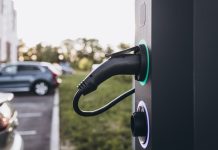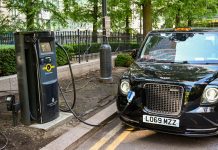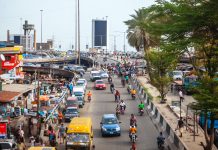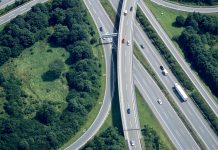According to Transport for London (TfL), each year air pollution causes thousands of Londoners to develop life-changing illnesses. But what can be done?
Road transport is currently the single most significant contributor of nitrogen dioxide and particulate matter emissions in Greater London.
To help clear the capital’s air, TfL expanded the Ultra Low Emission Zone (ULEZ) across all London boroughs from 29 August 2023.
Similar programmes have been introduced more broadly across the UK, including Oxford’s Zero Emission Zone and Scotland’s Low Emission Zones.
Despite these positive steps forward, our analysis shows fluctuating traffic congestion levels since the expansion of ULEZ to all London boroughs.
Given the complexities of London’s antiquated road network, can we rely on low-emission zones alone to reduce transport emissions and improve air quality? And is greater EV uptake the solution?
Tackling urban traffic congestion to improve air pollution
The core issue causing transport emissions to increase across the capital and the UK more broadly is slow-moving traffic. If you have ever been to London, you will know the rush hour traffic is dense and unrelenting.
Our latest data revealed that last year, the London rush hour was the slowest moving in the world – with an average speed of just nine mph for vehicles travelling through the city centre during peak hours.
With traffic moving that slowly, travel times took over 40 minutes for a simple six-mile trip across the city centre. The picture could be much brighter for the other 23 UK cities in our analysis, with British drivers spending 2% longer stuck in slow-moving traffic last year compared to 2021.
London’s traffic congestion and emissions challenges
Ultimately, the slower traffic moves, the longer it takes for congestion to clear, and the more emissions are generated.
Considering this simple fact, it is inevitable that London’s fuel consumption (both petrol and diesel consumption rose by 2.5% from 2021) and CO² emissions increased in tandem with worsening congestion levels.
Public programmes like ULEZ remain an essential piece of the puzzle for improving air quality. Yet, they are just one part of a much bigger picture.
Given that more than 90% of London’s vehicles already comply with ULEZ requirements, how can we expect its expansion to have such a drastic, long-term impact?
Accelerating the transition to more sustainable transport
Transforming how people move around UK cities is critical to achieving a long-term reduction in transport emissions.
Road and local authorities can harness mapping data intelligence for better traffic management to support this transformation – specifically, to ensure viable traffic flows and efficient use of city infrastructure.
Through more significant use of location data, such as traffic analytics, it will be possible for local city planners to monitor traffic patterns more accurately, identify problem areas, examine what causes bottlenecks and influence the way people drive.
For example, by comparing the travel times during peak hours with those under free-flowing traffic conditions, local authorities could more easily identify congestion hotspots throughout a city’s road network and formulate actions and policies to reduce delays.
At the same time, if we want to create urban environments with cleaner air, we also need to reduce the barriers to entry for people transitioning to electric vehicles (EVs).
Ubiquitous access to reliable, convenient and cost-effective charging infrastructure is critical to removing the psychological obstacle of charging anxiety that prevents widespread adoption.
Key players in the industry must find ways to minimise charging anxiety for early EV adopters.
This includes working with a mapping partner to provide urban drivers with access to comprehensive, reliable data via a centralised interface so they can easily anticipate and optimise the energy management of their vehicles.
At the same time, drivers would have access to real-time recommendations on nearby available chargers and enhanced route planning to identify the most cost-effective charging opportunities.
Leveraging data intelligence for traffic and EV transition
ULEZ will be particularly beneficial for disincentivising drivers of polluting vehicles from driving into city centres.
However, LEZs across the UK will become less critical as the volume of EVs increases naturally in line with other regulations that ban the sale of diesel and gasoline vehicles.
However, even when EVs become the norm, increasing inner-city congestion will continue to cause delays, increase business costs, and result in significant CO² emissions.
It is an issue that should be noticed by government, city planners and tech providers.
More intelligent use of mapping data intelligence is the key to more effective management of viable traffic flows and use of city infrastructure.
At the same time, using data intelligence around available and cost-effective public charging infrastructure is essential to remove the psychological barriers preventing widespread EV adoption across UK cities.
Only then will we achieve truly impactful, long-term reductions in transport emissions across the UK’s urban landscape.
This piece was written and provided by Andy Marchant, Traffic Expert at TomTom











